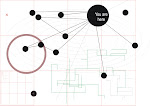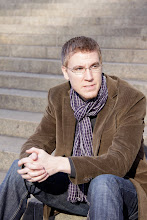“Art needs no justification” or so claimed H.R. Rookmaaker1 in his book with the same title. Yet our Western Culture, more specifically our American Evangelical culture, has inherited and continues to place a much depreciated value on the arts. Historically, the church was the primary proprietor of the arts, but this has through a number of developments, devolved into a tacit tolerance of the arts outside of the church. Rookmaaker’s and others claims2 that “art needs no justification” is theologically sound, but the statement swims up a 400 year old stream of thought. This declaration, may even find implicit approval within clergy and congregations, but is often ignored as superfluous within our liturgies. Apparently, by the deficient state of the arts in Evangelical society, some justification needs to be made.
While some churches are slowly awakening to the necessity of artistic integration, few are doing it, and even fewer are doing it well. It seems that if we might judge a movement by the availability of books, forums, conferences and the like on a given topic, there is a young growth toward the Church’s re-investment, or at least a dialogue and partnership in and with the arts. It seems this growth of interest may have begun in the mid to late 1960’s through various groups and theologians. Within the last century, but before the 60’s, Paul Tillich, Karl Barth, and a group of Dutch Neo-Calvinist’s including Abraham Kuyper and Herman Bavinck are the most well-known theologians who wrestled implicitly and explicitly with the arts, beauty, and culture on semi-frequent to continual basis. In the late 60’s, Roger Hazelton published several works on the necessity of addressing the arts. Following, into the 1970’s another group of Reformed theologians rose to prominence: Calvin Seerveld, H.R. Rookmaaker, and Francis Schaeffer. In the 1980’s LeLand Ryken and especially Nicholas Wolterstorff became known for their works in the field. Spanning 70’s, 80’s and into the 90’s John and Jane Dillenberger worked and published often on the topic: John from largely a historical and theological perspective, while his wife Jane worked as a art historian addressing the spiritual potential and content in secular works. Contemporary theologians such as Jeremy Begbie and
Should we see this as a Spirit revealed deficiency in our Liturgy and Worship and/or a reflection of our visually dominated and driven culture…among perhaps another 100 other reasons. Regardless of the value judgments we place on these interpretations and their implementation into our Liturgy, the visual nature of secular society coupled with the growth of worship and the experience driven post-modern culture forces us as the Church to address these discussions with openness and theological integrity.
1 H.R. Rookmaaker, Art Needs No Justification, (Downers Grove, IL: IVP 1978).
2 Others that make the same statement include Francis Schaeffer, Art and the Bible, (Downers Grove IL: IVP 1973); Franky Schaefer, Addicted to Mediocrity: 20th Century







